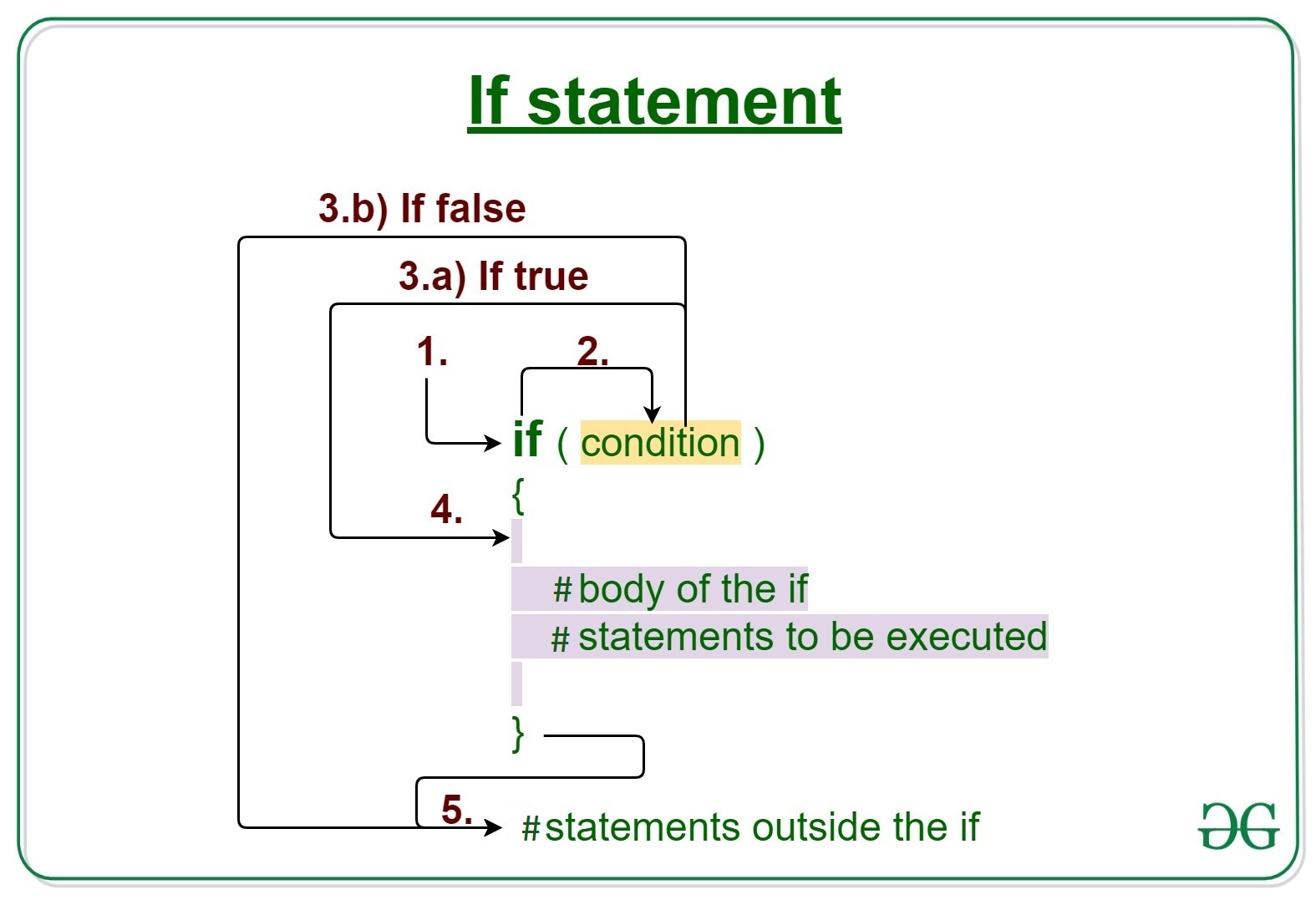R – if statement
Last Updated :
18 Oct, 2021
If statement is one of the Decision-making statements in the R programming language. It is one of the easiest decision-making statements. It is used to decide whether a certain statement or block of statements will be executed or not i.e if a certain condition is true then a block of statement is executed otherwise not.
Syntax:
if (expression) {
#statement to execute if condition is true
}
If the expression is true, the statement gets executed. But if the expression is FALSE, nothing happens. The expression can be a logical/numerical vector, but only the first element is taken into consideration. In the case of numeric vector, zero is taken as FALSE, rest as TRUE.

Working of R Programming if statement
- Control falls into the if block.
- The flow jumps to Condition.
- Condition is tested.
- If Condition yields true, goto Step 4.
- If Condition yields false, goto Step 5.
- The if-block or the body inside the if is executed.
- Flow steps out of the if block.
Flowchart R Programming if statement

Example of if statement in R
Example 1: R if statement
python
a <- 5
if(a > 0)
{
print("Positive Number")
}
|
Output:
Positive Number
In this example, variable a is assigned a value of 2. The given expression will check if the value of variable a is greater than 0. If the value of a is greater than zero, the print statement will be executed and the output will be “Positive Number”. If the value of a is less than 0, nothing will happen.
Example 2: R if statement with optional argument
Python
x <- 12
if (x > 20)
{
print("12 is less than 20")
}
print("Hello World")
|
Output:
12 is less than 20
Hello World
In this example, variable x is assigned a value. The given expression will check if the value of variable x is greater than 20.
If the value of x is greater than 20, the statement given in the curly braces will be executed and the output will be “12 is less than 20”. Here, we have one more statement outside the curly braces. This statement will be executed whenever we run the program as it’s not a part of the given condition.
Example 3: Python if…else statement
R
a <- -5
if(a > 0)
{
print("Positive Number")
}else{
print("-ve number")
}
|
Output:
"-ve number"
Share your thoughts in the comments
Please Login to comment...